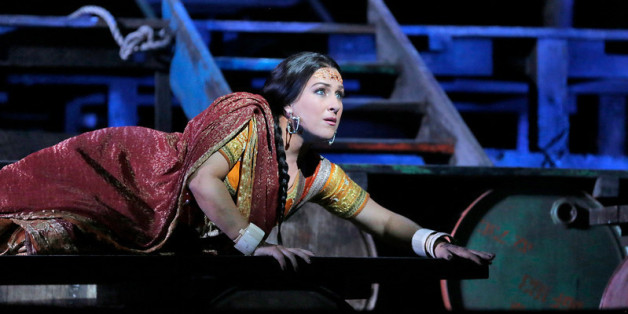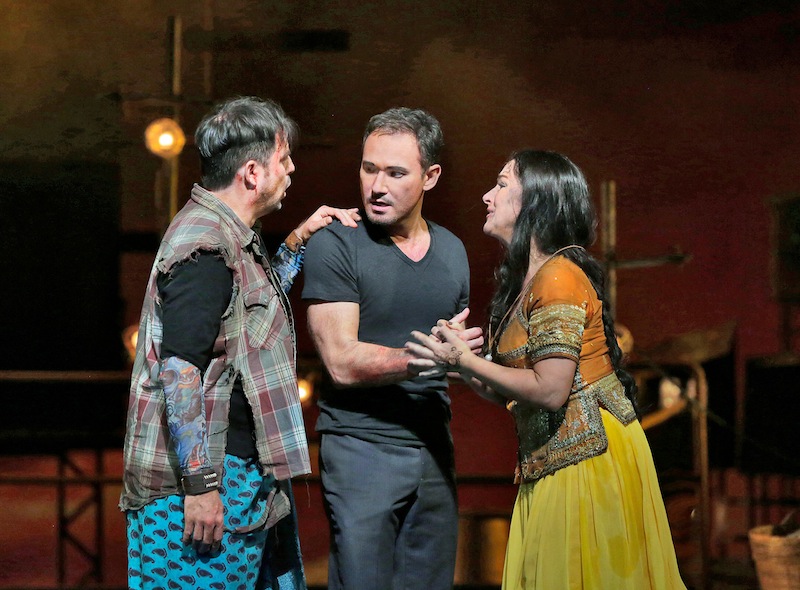 [January 23rd, 2016]
[January 23rd, 2016]Richard Strauss's Four Last Songs (Vier letzte lieder) was performed by Finnish lyric Soprano and leider singer, Soile Isokoski and the London Philharmonic Orchestra (LPO) and, indeed, it was beautiful but that's not surprising considering Isokoski is no stranger to the work of Strauss. This was even more evident during her performance as she sang with her eyes closed (to some sections of the piece), calmly and passionately to the German seasons. Each song had its own heartfelt temperament with the music embedded with a diverse range of emotions felt by the composer himself when he wrote it. For Isokoski though, some moments seemed louder than others, but she was still in her comfort zone and gave a performance that did not disappoint.
The LPO didn't fail either as they offered a refreshing performance to the Royal Festival Hall audience. LPO conductor Vladimir Jurowski went straight in with 'Frühling', bringing life to nature's changing leaves through the characteristic score which led onto 'September'. Here radiant strings and mighty horn-playing took full force while the audience immersed themselves to Isokoski's high reaching notes alongside the romantic music, filled with pathos and nostalgia.
The night was accompanied by three other pieces: Mozart's D-major Notturno, Magnus Lindberg's Gran Duo and Mozart's C-minor Serenade (K388). Although they seem like contrasting pieces on face value, after hearing them (one after the other) it's easy to see why the programme has brought these pieces together as the music have some audible similarities.
For the Mozart piece, Jurowski had the LPO divided into four small orchestras which was slightly unorthodox but intriguing nonetheless. There were two at the front by the choir area and two at both sides of the exits, which acted as an echo for the first two. It was definitely an experience having to move heads and eyes around for the auditorium for this piece. The opening movement was harmonious, graceful and easy to follow, but the best was saved for the last through the delicate sounds of the final Minuet and Trio where the LPO turned it up a notch. It almost seemed like a merry march had began to enter the auditorium.
Yet the piece is rather long and can be repetitive which is typical of Mozart's music but the performance was an interesting and hearty one. This was also the case for the LPO's performance of Serenade, which was slow, clear and elegant. The finale, however, was, perhaps, the fun part of the piece, which had the LPO breaking into sweat (I'm sure) with an enthusiastic conclusion from the percussionists, ending with a loud but welcomed climax.
Lindberg's piece first premiered in Birmingham in 2000 under maestro Rattle, and it is a stylish score written for thirteen woodwinds and eleven brass instruments. There's a terrain of sounds layering over one another, which made this an intense listen for the audience but the LPO gave it their best shot, which turned out to be a success as Lindberg stepped onto the stage to congratulate them and Jurowski.
For more information on other concerts at the Royal Festival Hall, please click here. Or here for information on the London Philharmonic Orchestra.
Isokoshi sung as if she were a bird of spring. #Sensational @LPOrchestra @southbanklondon #Strauss #FourLastSongs pic.twitter.com/cQgaw3c3fW— Mary Grace Nguyen (@MaryGNguyen) January 23, 2016
Mozart and Lindberg before Strauss. Nice to see Lindberg come down to shake hands with the maestro & @LPOrchestra. pic.twitter.com/kikjrOaNZT— Mary Grace Nguyen (@MaryGNguyen) January 23, 2016
Tremendous performances from @LPOrchestra & Jurowski.Clear, beautiful sounds of the sun,wind & twittering piccolos. pic.twitter.com/jtGAQ6bLns— Mary Grace Nguyen (@MaryGNguyen) January 23, 2016
 |
| trendfem.blogspot.com/2014/11/lesmartyrs-operarara-theoae.html |
Review of Bluebeard's Castle by the Royal Philharmonic Orchestra. (2015)
 |
| http://trendfem.blogspot.co.uk/2015/01/bartok-duke-bluebeards-castle-royal-philharmonic-orchestra.html |
















